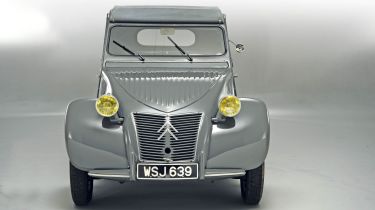Citroen 2CV
Enduring design saw tin snail stay in production for over four decades.
Think of a Citroen, and the 2CV probably springs to mind. The ‘tin snail’ is one of the company’s most successful models, with nearly seven million made in an incredible 41-year production run.
Its popularity is the result of inspired design and engineering. After the success of the Traction Avant, Citroen decided to build a cheap, versatile vehicle to mobilise France’s rural population.
Boss Pierre-Jules Boulanger laid out a brief for engineer André Lefebvre. The new car had to be easy to drive and capable of taking at least two occupants, plus 50kg of luggage. It should be able to carry a basket of eggs over a ploughed field without cracking any shells, and tall enough for Boulanger to drive while wearing a hat!
The result debuted at the 1948 Paris Motor Show, and was every bit as clever as the Traction Avant. Externally, the show car closely resembled the 1955 example pictured here. The fabric roof and flip-up side windows saved weight, and the steel panels were simple to make and repair. Distinctive details included the faired-in rear wheels and corrugated bonnet.
Inside, the seats were simple deckchair designs that could be removed easily to boost load space. There was a metal-rimmed steering wheel, an ammeter displaying battery charge and a small speedometer.
What really impressed were the mechanicals. Long-travel suspension helped to provide a comfortable ride, while the front-wheel-drive chassis
ensured excellent handling.
Under the bonnet of the earliest cars was a tiny air-cooled 375cc two-cylinder petrol engine, delivering 9bhp. This was economical and very reliable, having been designed to withstand maximum revs for up to 50,000 miles.
More powerful units followed, but even the final 1990 examples delivered 29bhp. The 12bhp 425cc version seen here just about hits 45mph on the flat.
The 2CV spawned many derivatives, including a van, a twin-engined 4WD version and the Dyane hatchback. Yet ultimately, what made this car such a hit was the excellence of the original.







